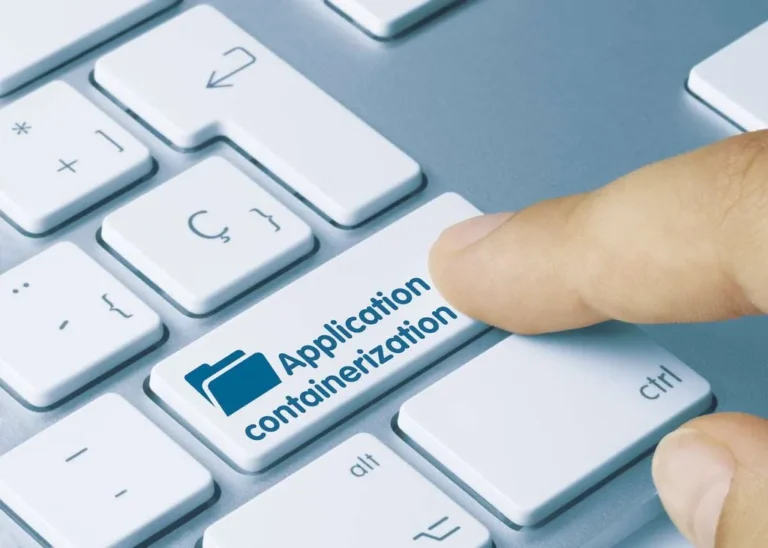EAI makes use of What is Enterprise Application Integration a wide selection of on-premises and cloud-based technologies to attach your techniques and purposes. EAI implementation means you needn’t think about software compatibility when selecting new technologies. You’re not tied to a single vendor; merely select this system greatest suited to your operations and objectives. Enterprise application integration is one way to build a extra connected business setting and keep away from prevalent information administration pitfalls. Without it, organizations face steady friction as information will get trapped in utility silos. Employees waste time piecing together insights from separate sources versus specializing in value-creating duties.

No-code Anomaly Detection For Datadog
Enterprise Application Integration (EAI) is an ongoing process of implementing instruments and technologies that allow all business applications to share information and workflows with one another. EAI offers a single interface for users to connect with all integrated purposes, companies, databases, and different systems. Today, organisations depend on many software program applications to handle their operations, from customer relationship management (CRM) methods to produce chain management and every little thing in between. If you are prepared to transform your small business processing by simply integrating the enterprise apps, data, and cloud infrastructure into one unified system, then Hidden Brains could be your ultimate tech partner. You can rent cellular app developer in India with Hidden Brains to judge the complexity of enterprise necessities and get a perfect solution.

⚠️ Integration Platform Choice
Though there are a selection of software program builders to hire in India, therefore addressing these points may be less complicated for any enterprise. If sure, then here is a full blog explaining every thing about Enterprise Application Integration (EAI). Scalability in EAI implementation refers back to the ability to handle rising volumes of data and transactions with out efficiency degradation. It is necessary to contemplate the scalability of every part within your EAI system to prevent bottlenecks. Developers plan for horizontal scaling (adding extra server nodes) and vertical scaling (adding resources like CPU or memory to present nodes) so EAI solutions can distribute load effectively. Cloud-based integration presents elastic scalability, so the system can dynamically adjust assets based on demand.
How Enterprise Utility Integration Works
In business course of integration, organizations make methods to improve their performance and obtain desired enterprise goals by automating their processes. Traditional strategies for internal application integration embrace specialised coding. However, an enterprise service bus (ESB), a middleware platform that makes use of a rules engine to transform and route messages and allow communication across applications, can also be a viable option. Application integration brings everything under a single umbrella and streamlines the overall workflow.
In this part, we’ll explore the various enterprise utility integration fashions, explaining how they work. For occasion, integrating your order management system along with your stock and shipping techniques can automate the whole order fulfilment process, from order placement to delivery. If these systems don’t communicate with one another, your company ends up with data silos—isolated pockets of data that can’t be shared easily throughout your organisation. These platforms supply ready-to-use connections, APIs, methods to handle data, messaging, managing work processes, and keeping track of everything. Enterprise Application Integration (EAI) is all about making sure different parts of a company’s computer methods can speak to one another. Think of it like making sure everybody at an enormous ceremonial dinner can communicate, even when they’re sitting at totally different tables.
- Integration specialists can utilize the Developer Toolkit to build complex, multi-style integrations, with help for multiple programming languages and integration with management instruments like GIT, Maven, and Jenkins.
- Ideal for big enterprises needing scalable, versatile integration for complex situations like asynchronous messaging and event-driven architectures.
- But the actual challenge lies in the complexity of managing the a quantity of apps and their knowledge.
- But at the same time, a lot of you are questioning whether or not is it as easy to integrate because it sounds, let’s evaluate the challenges of enterprise software integration.
In addition, TIBCO Cloud Live Apps facilitates the development of enterprise-grade applications without coding, enabling citizen builders to create solutions for enterprise problems independently. OCI delivers API full lifecycle management, so you’ll be able to design, build, promote, and safe internal or exterior APIs. A hub-and-spoke mannequin is an easy approach to join a number of apps, nevertheless it comes with the next upfront cost than point-to-point integrations. It’s additionally essential to notice that if the hub fails, it affects the entire network.
It’s easy to start but gets difficult if you add extra apps as a result of you want to manage all these connections. Yes, EAI may be tailored by any dimension of enterprise to streamline operations, automate workflows, and enhance communication, contributing to general effectivity. If you’re nonetheless wondering how enterprise application integration is beneficial to your business and why it has been gaining traction, then contemplate the FAQs section.
This system makes it simple to plug in new apps — all you have to do is construct an adapter. However, a bus integration requires extensive up-front programming and configuration. In a point-to-point integration, a custom script pulls data from one software and pushes it to a different.
It can pose a major change, though — particularly if your company relies heavily on legacy functions. This integration connects apps to a central software program platform (bus) with an adapter. The adapter does a lot of the heavy lifting — making use of a set of requirements and protocols to remodel the information and handle any needed actions. By implementing a cloud-based strategic integration platform, they gained real-time visibility into production schedules, inventories, and shipments throughout suppliers. Multi-tier provide chains at the second are orchestrated seamlessly, accelerating production.
A notable feature of Boomi is its pre-built integration connectors, which allow for quicker and simpler information trade between purposes and different knowledge sources. The platform additionally helps hybrid deployment, ensuring synchronization of integrations across cloud, on-premises, and edge environments. Boomi provides integration steerage through its “Suggest” feature, which utilizes machine learning from over 200 million integrations to simplify entity mapping between applications. Additionally, Boomi’s single-platform expertise allows users to leverage different platform companies, corresponding to EDI and API administration, seamlessly.
By prioritizing environment friendly growth tools and pre-built connectors, you get to the business benefits sooner. Integrating applications across the organization has vital benefits in phrases of price reductions and operational effectivity. If your business includes using multiple techniques for a range of actions, enterprise application integration is the best way to optimize operations. Modern digital architecture is complex and difficult to handle with multiple applications. That’s the place Enterprise Application Integration takes place and permits businesses to share data and workflows seamlessly.
SaaS app integration contains connecting a SaaS application with cloud-based or on-premise options by way of various APIs. Thanks to SaaS applications, enterprises can seamlessly switch their essential information to the cloud and entry it from anyplace, anytime. Enterprise application integration offers a unified single supply of truth for the decision-makers to extract the knowledge they want, in their desired format.
This integration enhances customer engagement, streamlines claims handling, and positions the corporate as an industry chief, distinguishing it from competitors and driving business growth. The integration of knowledge and enterprise processes can be completed at the communications level. Data integration makes sure that applications can discuss to every other, whereas communications-level integration specifies how that talking happens.
Transform Your Business With AI Software Development Solutions https://www.globalcloudteam.com/ — be successful, be the first!
